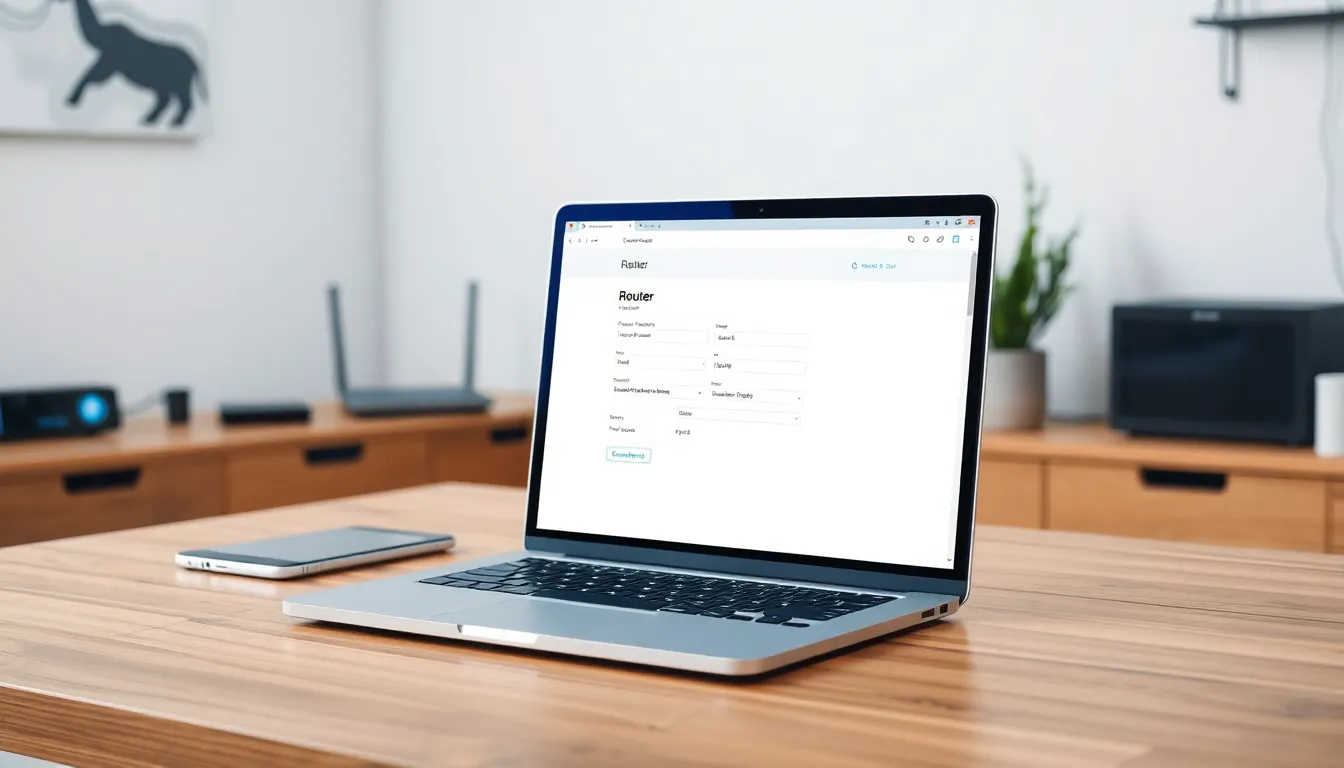Table of Contents
ToggleIn today’s app-saturated world, knowing how users interact with mobile apps is like having a magic crystal ball. It’s not just about downloads; it’s about understanding what makes users tick—or, in some cases, what makes them run for the hills. Analytics for mobile apps isn’t just a fancy buzzword; it’s the secret sauce that transforms ordinary apps into user magnets.
Imagine launching an app and having no clue if anyone’s actually using it. That’s like throwing a party and wondering if anyone showed up. By diving into app analytics, developers can uncover invaluable insights, optimize user experience, and ultimately boost retention rates. So, if you want your app to thrive like a well-watered plant instead of wilting away, it’s time to embrace the power of analytics. After all, knowledge is power, and in the app world, it’s also a ticket to success.
Overview of Analytics for Mobile Apps
Mobile app analytics plays a crucial role in understanding user interactions and behaviors. These analytics quantify user engagement and retention. Collecting data from in-app activities, such analysis enables developers to identify trends and patterns. Through metrics such as daily active users (DAUs) and session duration, developers can gauge overall app performance.
User feedback forms an essential part of the analytics equation. Analyzing reviews and ratings provides insights into user satisfaction and areas for improvement. When developers focus on specific metrics, they pinpoint features that drive engagement. Retention rates serve as a critical metric, allowing them to assess how effectively the app keeps users engaged over time.
Event tracking is another valuable component. This method tracks specific actions, such as clicks and purchases, aiding in understanding user journeys. By monitoring in-app purchases, app creators can evaluate the effectiveness of their monetization strategies. This comprehensive view enables strategic decisions that improve user experience.
Real-time analytics add an extra layer of insight. Monitoring live data allows developers to respond quickly to trends and issues as they arise. These metrics help identify when users abandon tasks, guiding improvements in app usability. As a result, teams can continuously iterate on features based on ongoing user data.
Ultimately, employing mobile app analytics creates a feedback loop that fuels growth. Enhanced understanding of user behavior encourages developers to make informed decisions. Developers achieve optimal performance and user satisfaction when they leverage these insights effectively.
Importance of Analytics in Mobile App Development

Analytics serves as a critical component in mobile app development, guiding developers toward understanding user interactions and enhancing performance. Effective analysis transcends mere download figures, offering insights essential for improving user experience and increasing retention rates.
Tracking User Engagement
Tracking user engagement reveals how individuals utilize the app during various sessions. Daily active users (DAUs) provide a clear indicator of an app’s reach, while session duration highlights user interest levels. Regularly monitoring these metrics fosters better understanding of user habits, allowing for targeted improvements. Gathering data on specific interactions, like clicks or feature usage, aids in tailoring the app’s functionality. This level of engagement analysis supports developers in creating a more satisfying experience, ultimately increasing user retention.
Measuring App Performance
Measuring app performance involves evaluating numerous metrics that reflect its effectiveness. Key performance indicators (KPIs) include load time, crash rates, and conversion rates. Tracking these metrics in real time enables quick identification of issues that may disrupt user experience. Optimizing these areas contributes to smoother performance, driving higher user satisfaction. Additionally, real-time performance monitoring allows developers to implement immediate updates, ensuring the app remains reliable and engaging. Such proactive measures lead to enhanced overall performance and user trust.
Key Metrics in Mobile App Analytics
Mobile app analytics reveals crucial metrics that enhance user engagement and experience. Understanding these metrics allows developers to make data-driven decisions.
User Acquisition Metrics
User acquisition metrics focus on how effectively an app attracts users. Assessing organic and paid install sources provides valuable insights. Cost per install (CPI) measures the expense associated with acquiring each new user. Analyze events like sign-ups or first-time logins to evaluate user onboarding success. Tracking conversion rates from marketing campaigns offers clarity on which strategies resonate with users. Additionally, lifetime value (LTV) estimates the revenue generated from a user over their entire engagement with the app, providing further insight into acquisition efficiency.
Retention Metrics
Retention metrics gauge how well an app keeps users engaged over time. Daily active users (DAUs) and monthly active users (MAUs) track the number of unique users interacting with the app. This data helps identify user engagement trends. Churn rate reflects the percentage of users who stop using the app, a critical metric to monitor for improving retention strategies. Analyzing session duration reveals how long users spend within the app, indicating levels of user satisfaction. Furthermore, cohort analysis segments users based on their behaviors, providing detailed insights into retention patterns by tracking specific user groups over time.
Popular Analytics Tools for Mobile Apps
Numerous analytics tools can enhance the understanding of user interactions within mobile applications. Each tool offers distinct features vital for app developers.
Google Analytics for Mobile
Google Analytics for Mobile provides comprehensive insights into user behavior and engagement. It tracks metrics like daily active users and session duration, helping developers evaluate app usage. Customizable dashboards allow for tailored reporting specific to app needs. Integrating Google Analytics into a mobile app enables real-time monitoring of user interactions. This powerful tool’s versatility supports marketing campaign analysis, ensuring developers make informed decisions based on user data.
Firebase Analytics
Firebase Analytics stands out as a robust platform for mobile app developers. It offers user-friendly features such as event tracking and audience segmentation. Developers can monitor in-app purchases and specific user actions effortlessly. Firebase provides real-time insights, enhancing responsiveness to user behaviors. Notably, this tool integrates seamlessly with other Firebase services, enabling a comprehensive approach to app development and performance optimization.
Mixpanel
Mixpanel delivers advanced analysis features focused on user engagement and retention. It excels in tracking events and funnels, providing detailed data on user journeys. Developers use Mixpanel to visualize user paths and identify drop-off points effectively. The tool’s ability to perform cohort analysis aids in understanding retention metrics over time. By leveraging Mixpanel’s functionality, app creators can optimize features based on user interactions, leading to improved user satisfaction and increased retention rates.
Best Practices for Implementing Analytics
Implementing analytics effectively requires a structured approach. Start by defining specific goals for the mobile app. Measuring user retention and engagement should guide these objectives, ensuring they align with overall business aims.
Choosing the right tools is crucial for gathering accurate data. Google Analytics for Mobile provides comprehensive insights, while Firebase Analytics offers user-friendly event tracking and audience segmentation features. Mixpanel enhances understanding of user behaviors through advanced engagement analysis.
Integrating analytics into the app from the beginning fosters better insights. Updating the app continuously with new features and metrics can improve tracking capabilities. Tracking relevant user events like clicks and purchases provides clarity on user interactions and behaviors.
Focusing on key performance indicators (KPIs) such as load time and crash rates helps identify potential issues early. Understanding user behavior allows developers to make data-driven decisions that enhance performance. Leveraging real-time analytics enables them to respond swiftly to trends and user feedback.
Segmenting users through cohort analysis reveals valuable insights into retention patterns. This method enables developers to analyze how different groups interact with the app, informing retention strategies. Collecting user feedback through reviews also plays a vital role in identifying areas for improvement.
Lastly, continuously refining the analytics strategy ensures sustained growth. Regularly reviewing data and adapting to changing user behaviors leads to a more tailored user experience. Focusing on these best practices empowers developers to optimize mobile app analytics for maximum impact.
Mobile app analytics is vital for developers aiming to enhance user experience and retention. By understanding user behavior through various metrics and tools, they can make informed decisions that drive app performance. Real-time insights and feedback loops empower developers to swiftly address issues and optimize features.
Implementing best practices in analytics not only fosters growth but also aligns app objectives with user needs. As the mobile app landscape continues to evolve, leveraging analytics effectively will remain a key factor in achieving long-term success. Embracing this data-driven approach ensures that apps not only attract users but also keep them engaged and satisfied.





